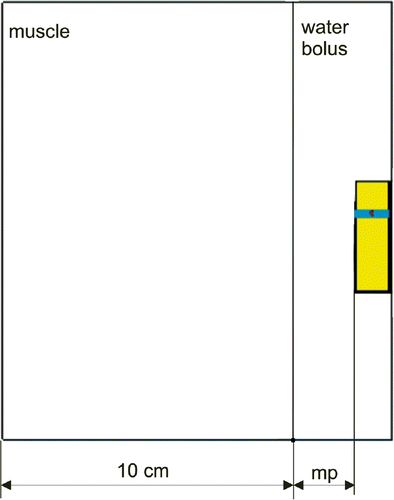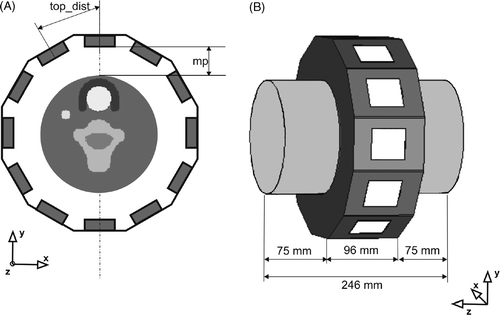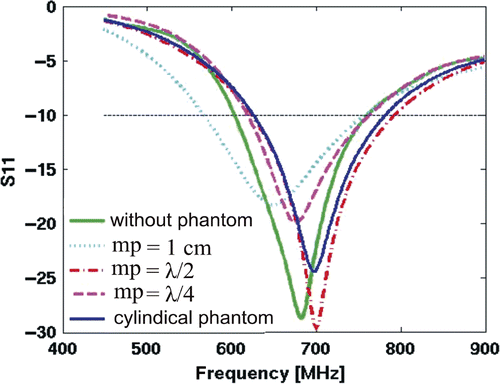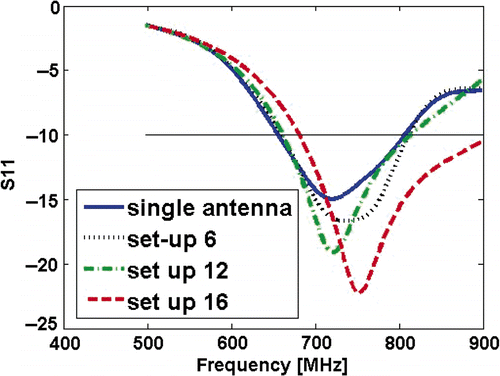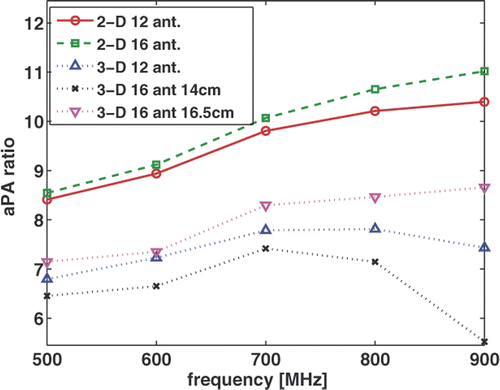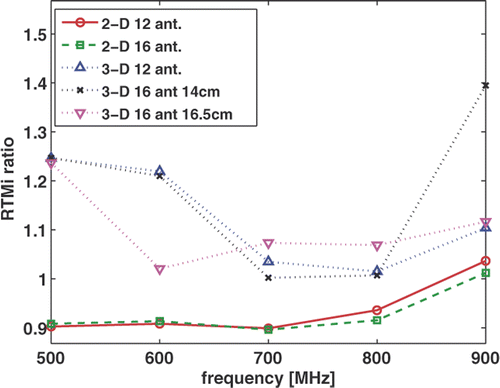Figures & data
Figure 1. Geometry of the proposed antenna. (A) Cross-sectional top view. (B) Cross-sectional side view.
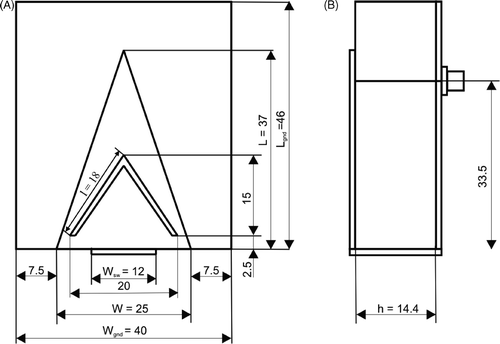
Table I. Dielectric parameters of Cole–Cole dispersion model used to predict the dielectric properties in the selected neck structures.
Figure 5. E-field distribution along the patch at different frequencies. Cross-sectional top view. (A) 350 MHz; (B) 800 Mhz.
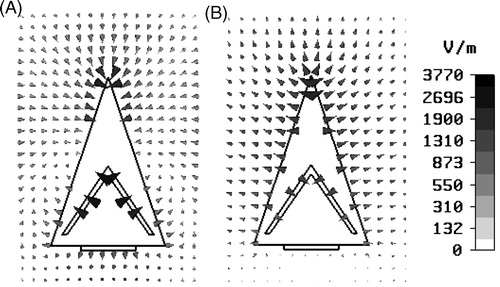
Figure 6. SAR distribution in muscle phantom for different frequencies. (A) f = 350 MHz; (B) f = 800 MHz.
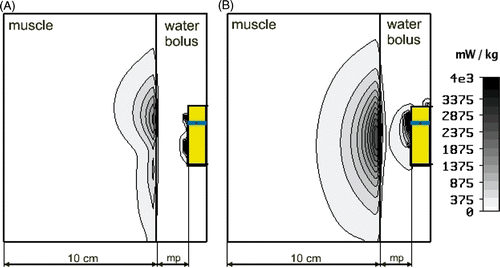
Table II. The areas (mm2) enclosed by centrally located 50%, 75% and 90% iso-SAR contours and the length and width of the focus for set-ups of 12 and 16 antennas at various frequencies.
Figure 9. The normalised SAR distributions calculated in the cross-section through the muscle phantom at y = 0 cm for (A) 12-antenna set-up, f = 500 MHz; (B) 12-antenna set-up, f = 800 MHz; (C) 16-antenna set-up, f = 500 MHz; (D) 16-antenna set-up, f = 800 Mhz. The axes are in mm.
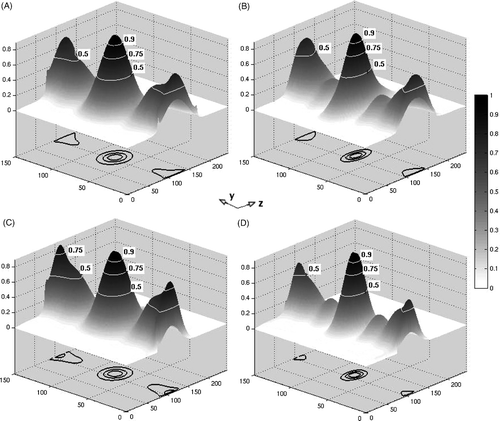
Figure 10. The normalised SAR distributions calculated in the cross-section through the semi-3D neck phantom containing tumour at z = 110 mm. The axes are in mm. (A)12-antenna set-up, frequency f = 500 MHz; (B)12-antenna set-up, f = 800 MHz; (C)16-antenna set-up, d = 16.5 cm, f = 500 MHz; (D)16-antenna set-up, d = 16.5 cm, f = 800 Mhz. (E)16-antenna set-up, d = 14 cm, f = 500 MHz; (F) 16-antenna set-up, d = 14 cm f = 800 Mhz.
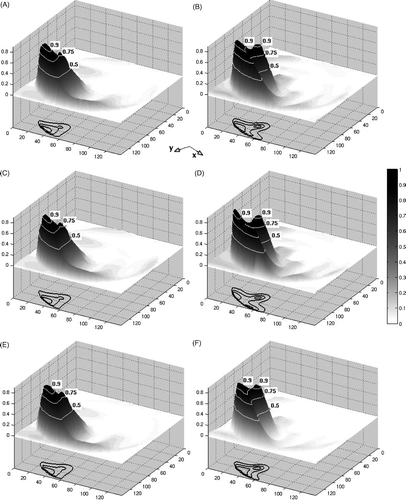
Table III. aPA ratio calculated in 2D and 3D for phantom both with and without tumour. Frequency f = 800 Mhz.
Table IV. The areas (mm2) enclosed by 75% and 90% iso-SAR contours in the target for set-ups of 12 and 16 antennas at various frequencies.
